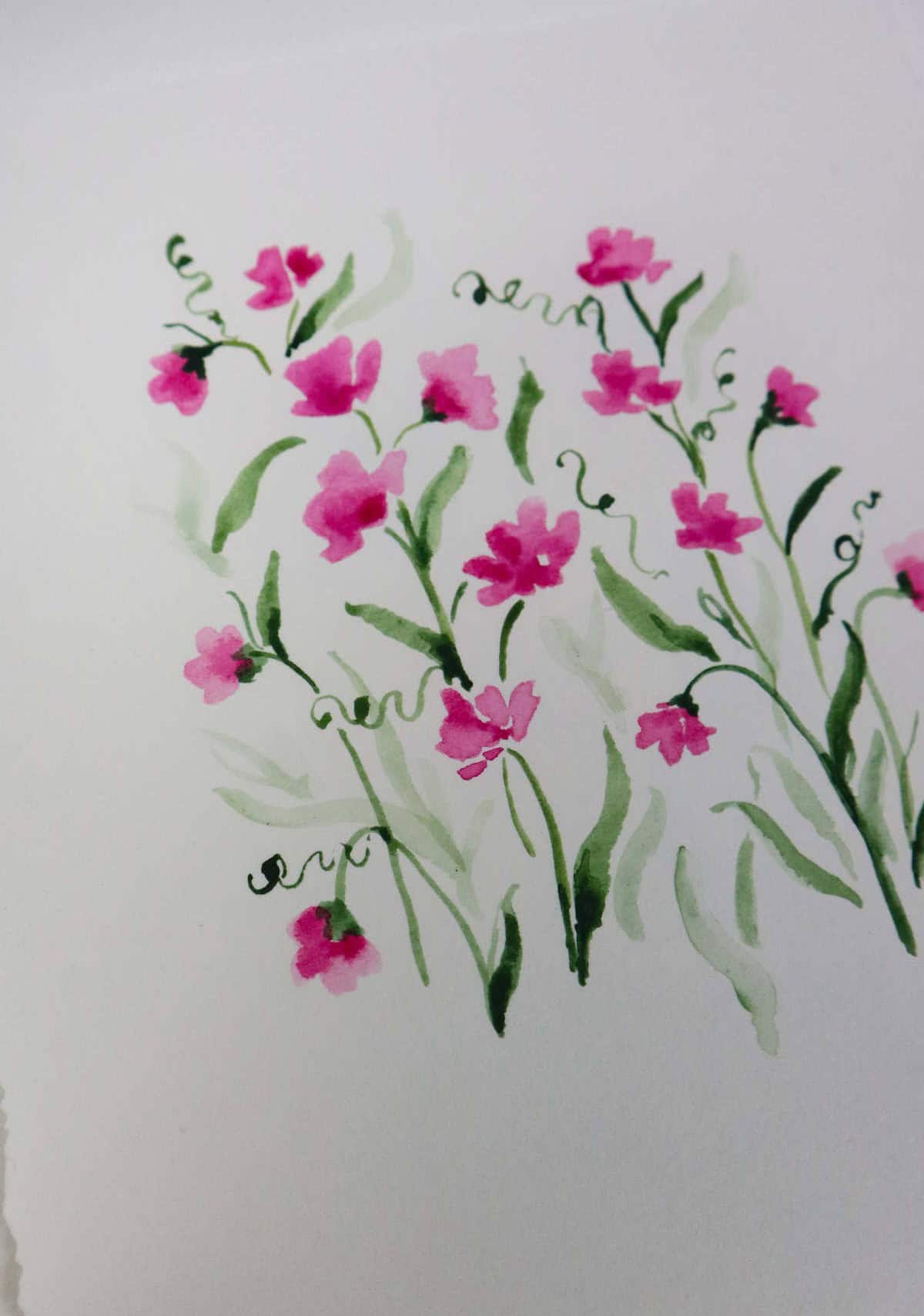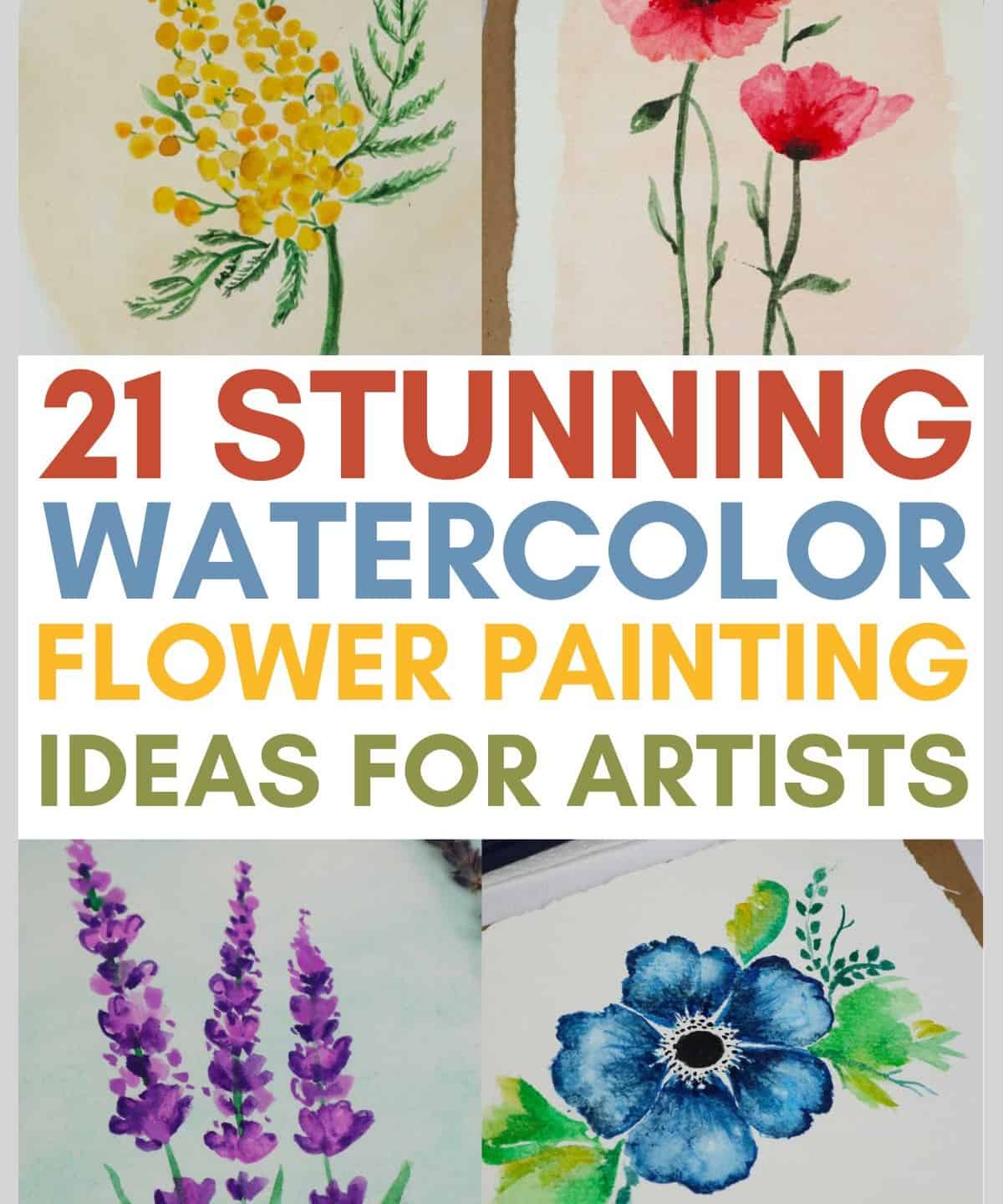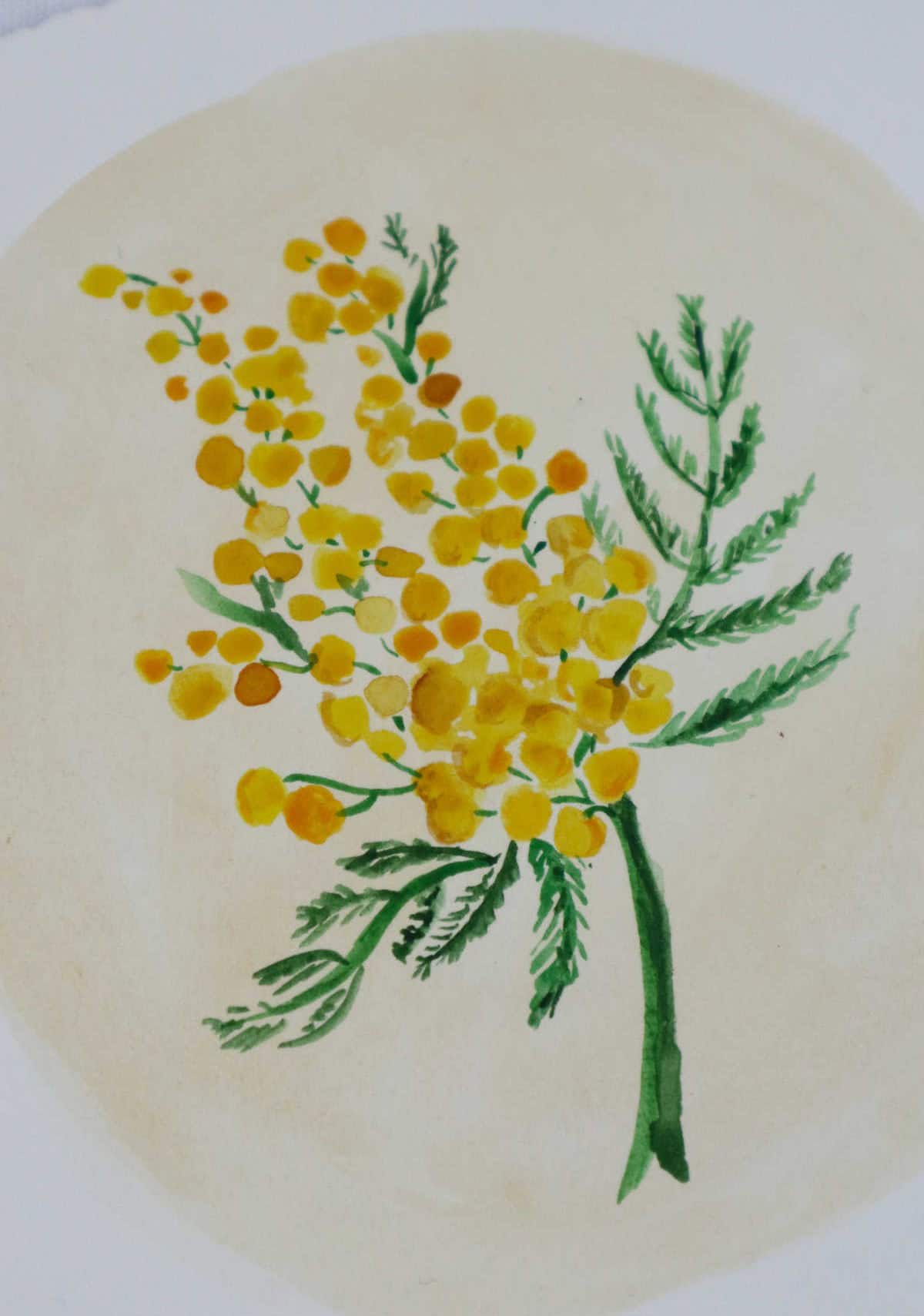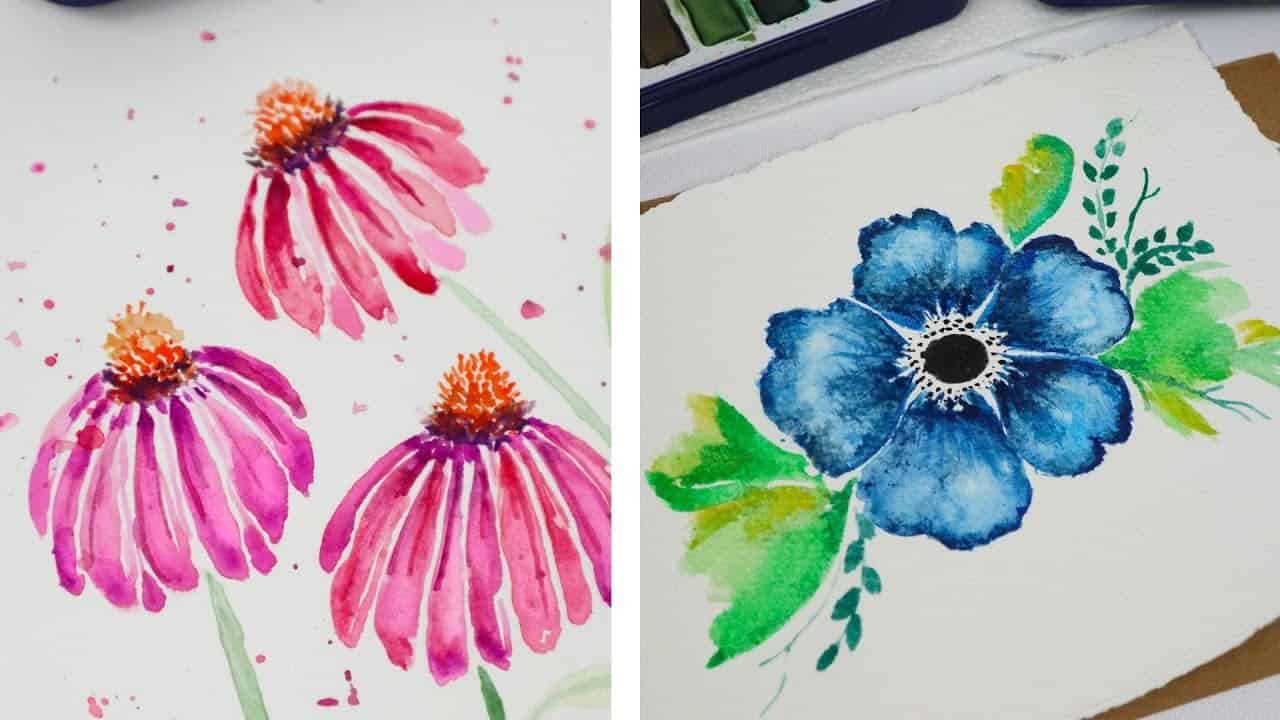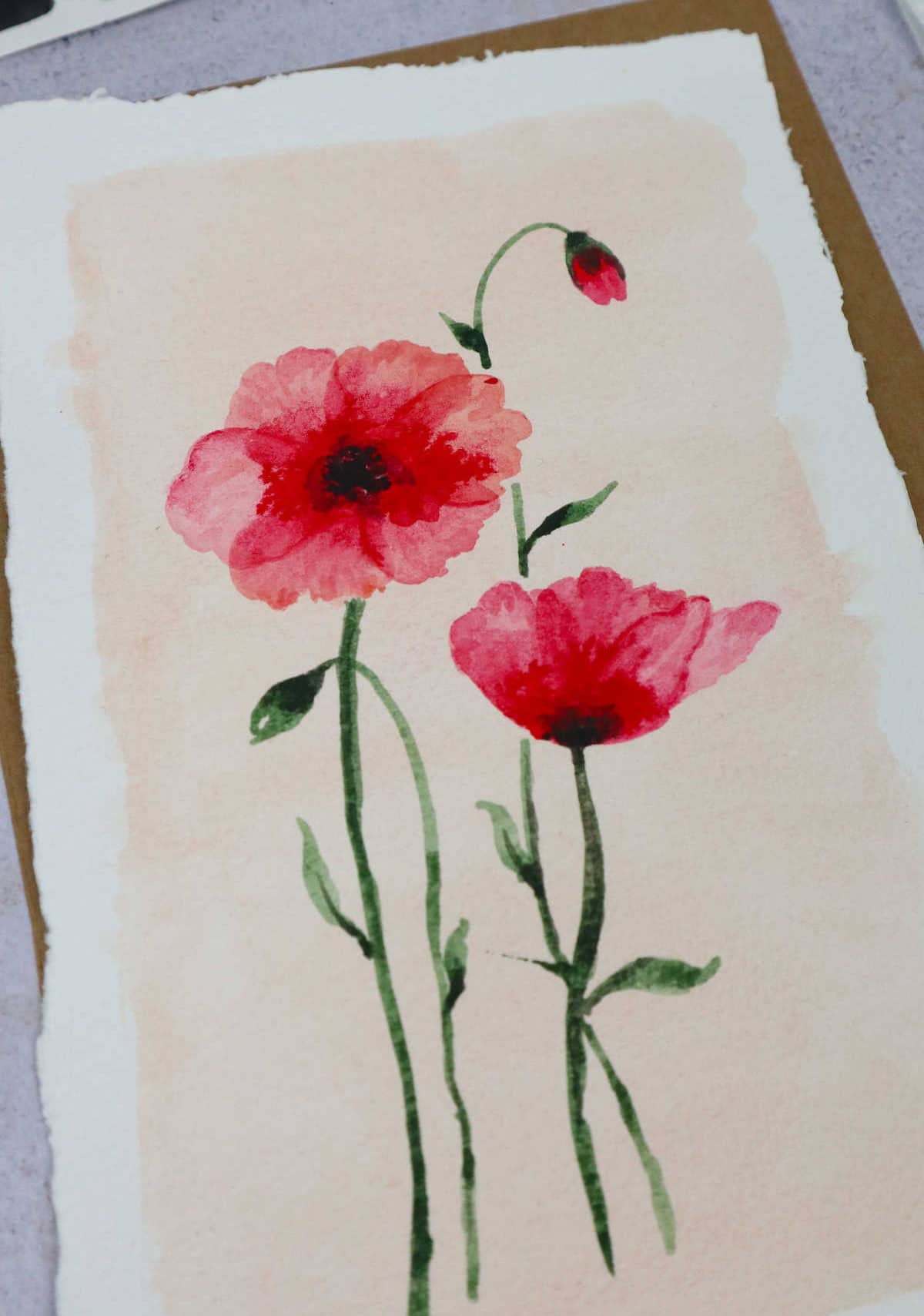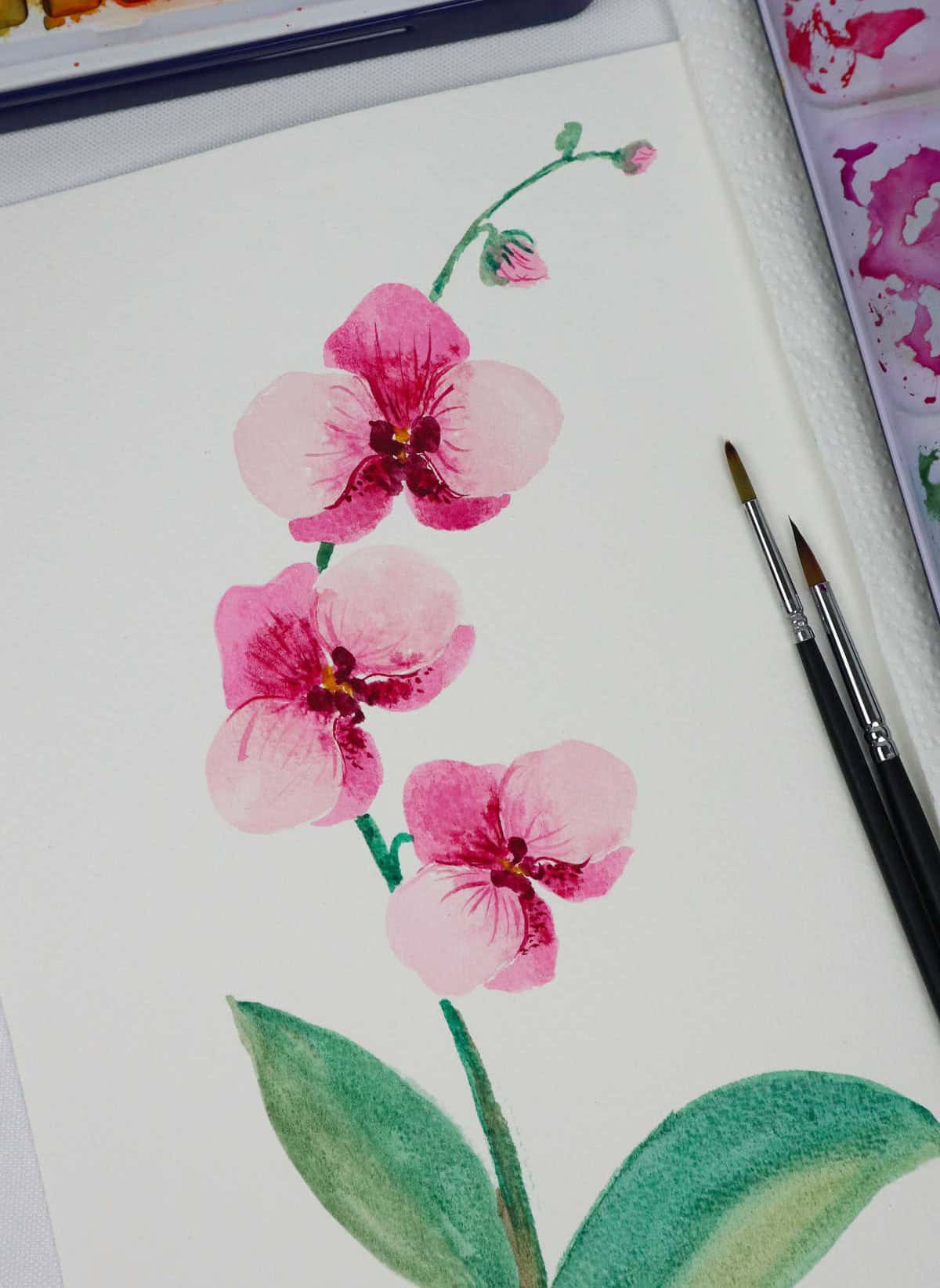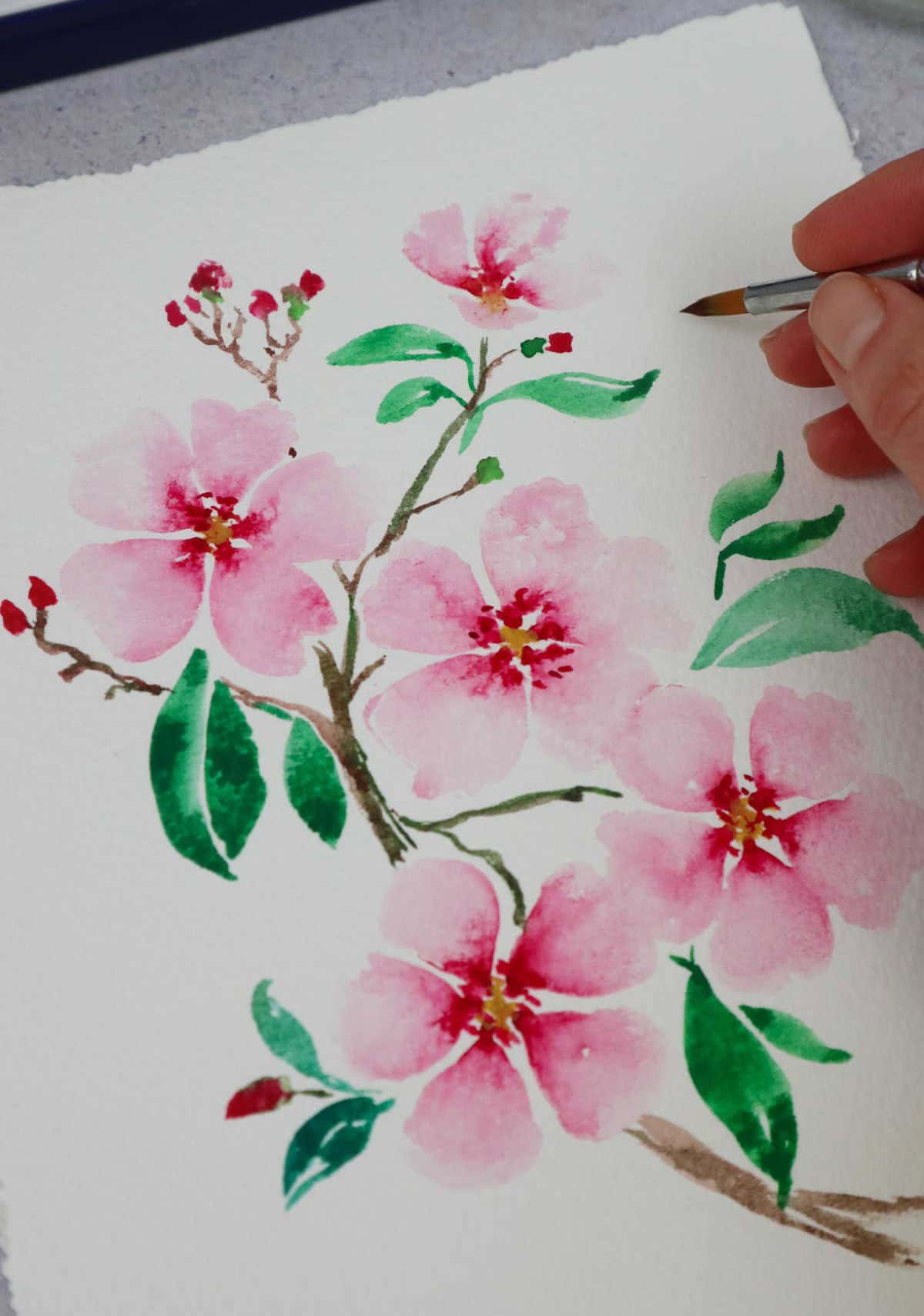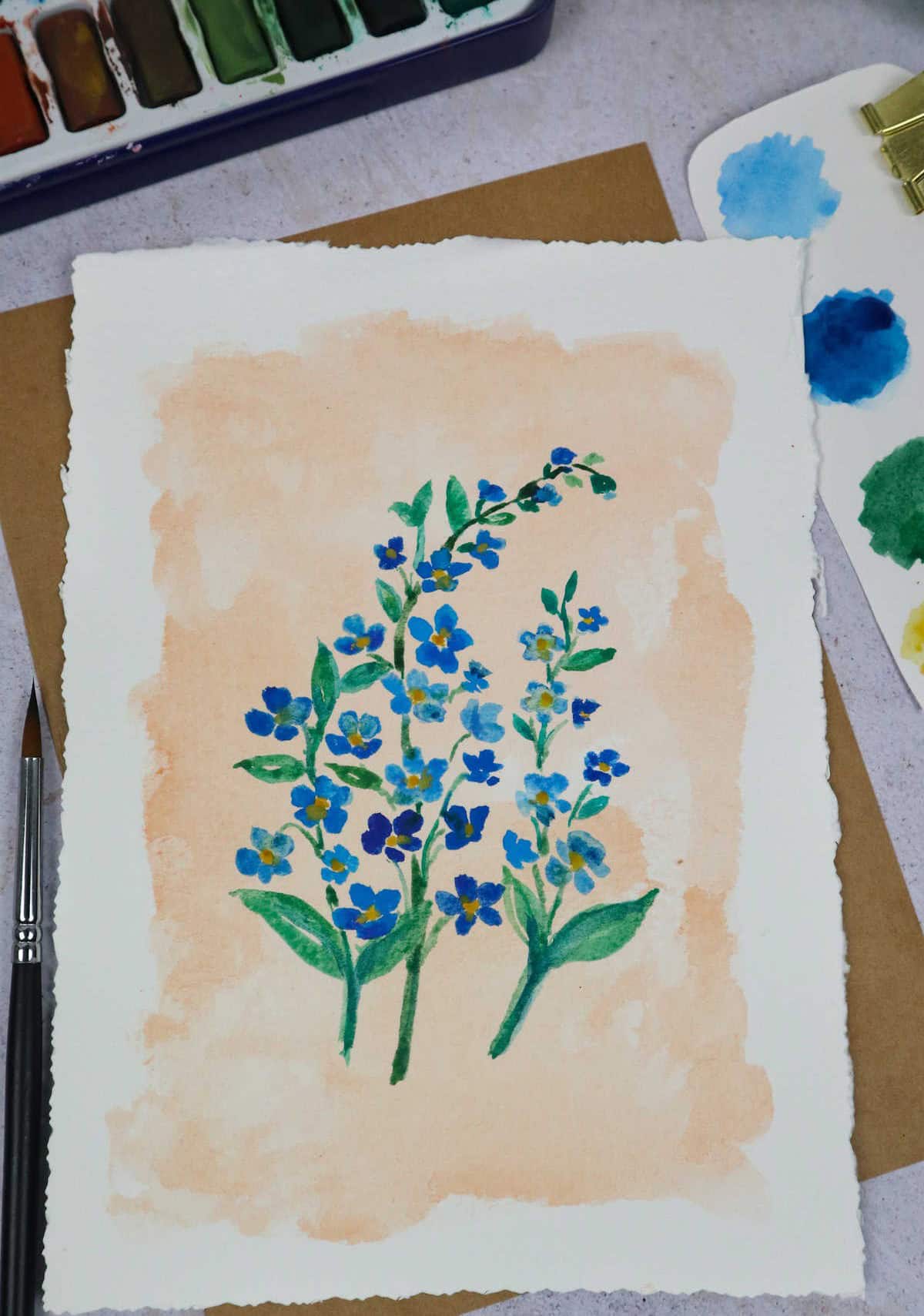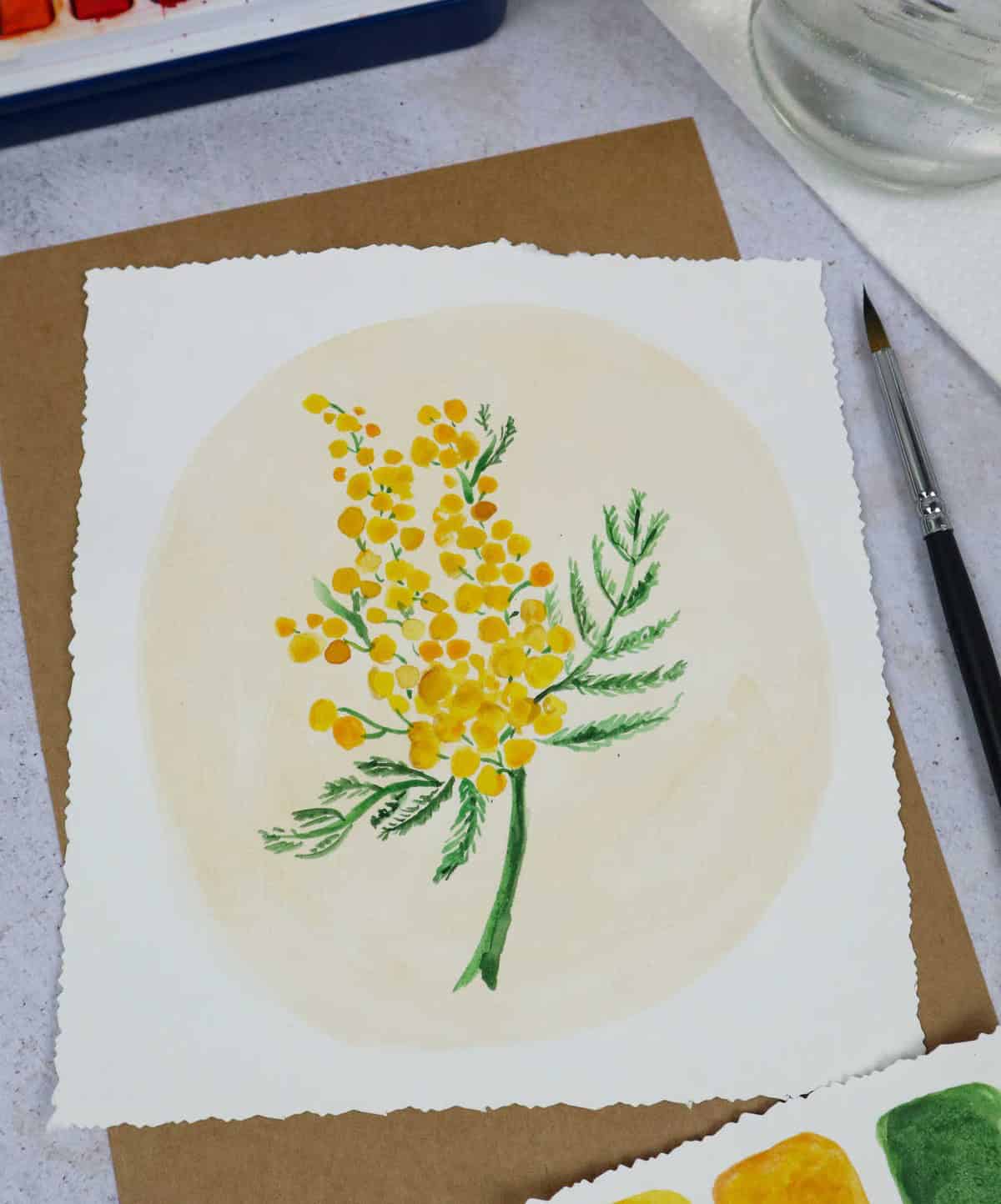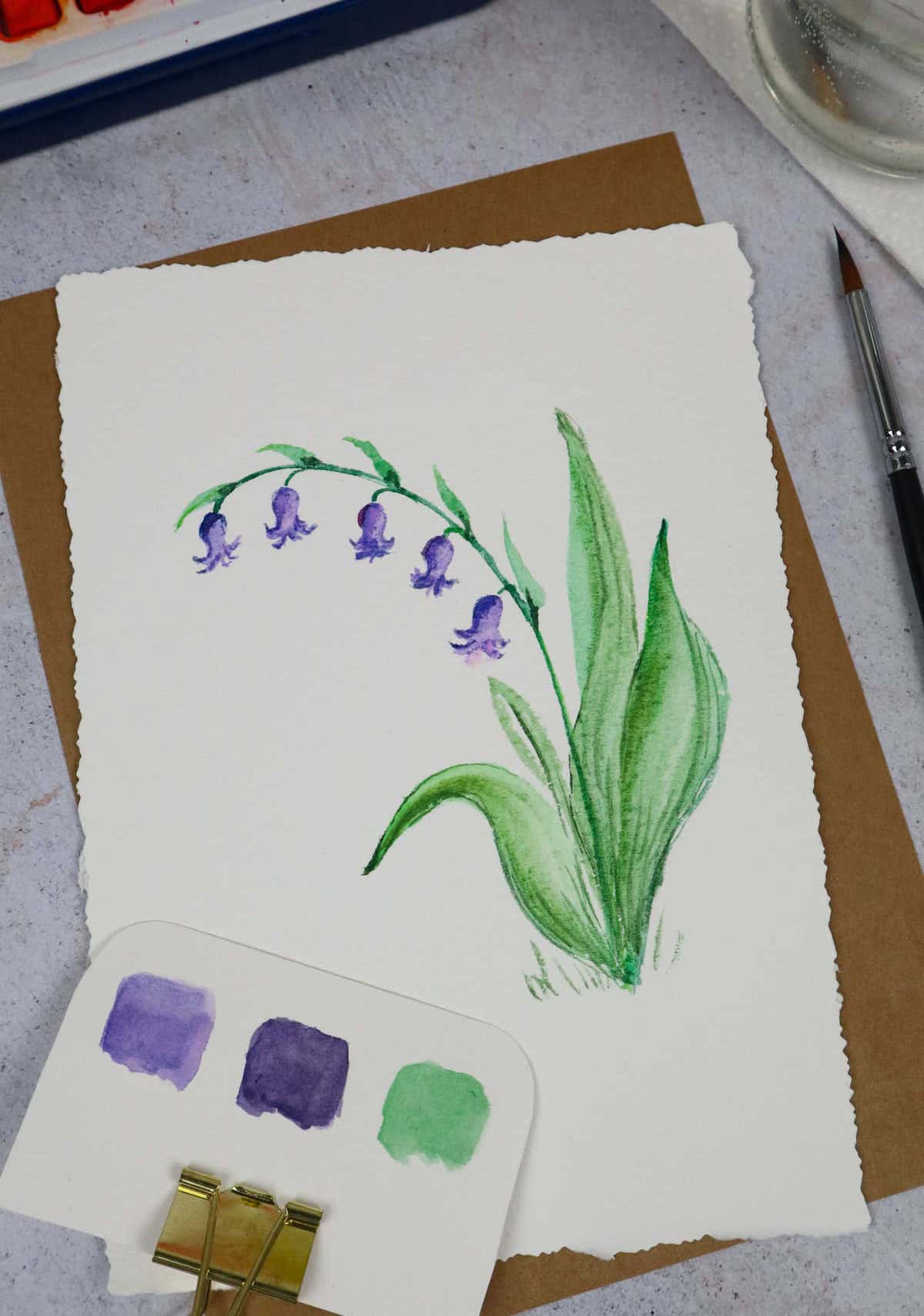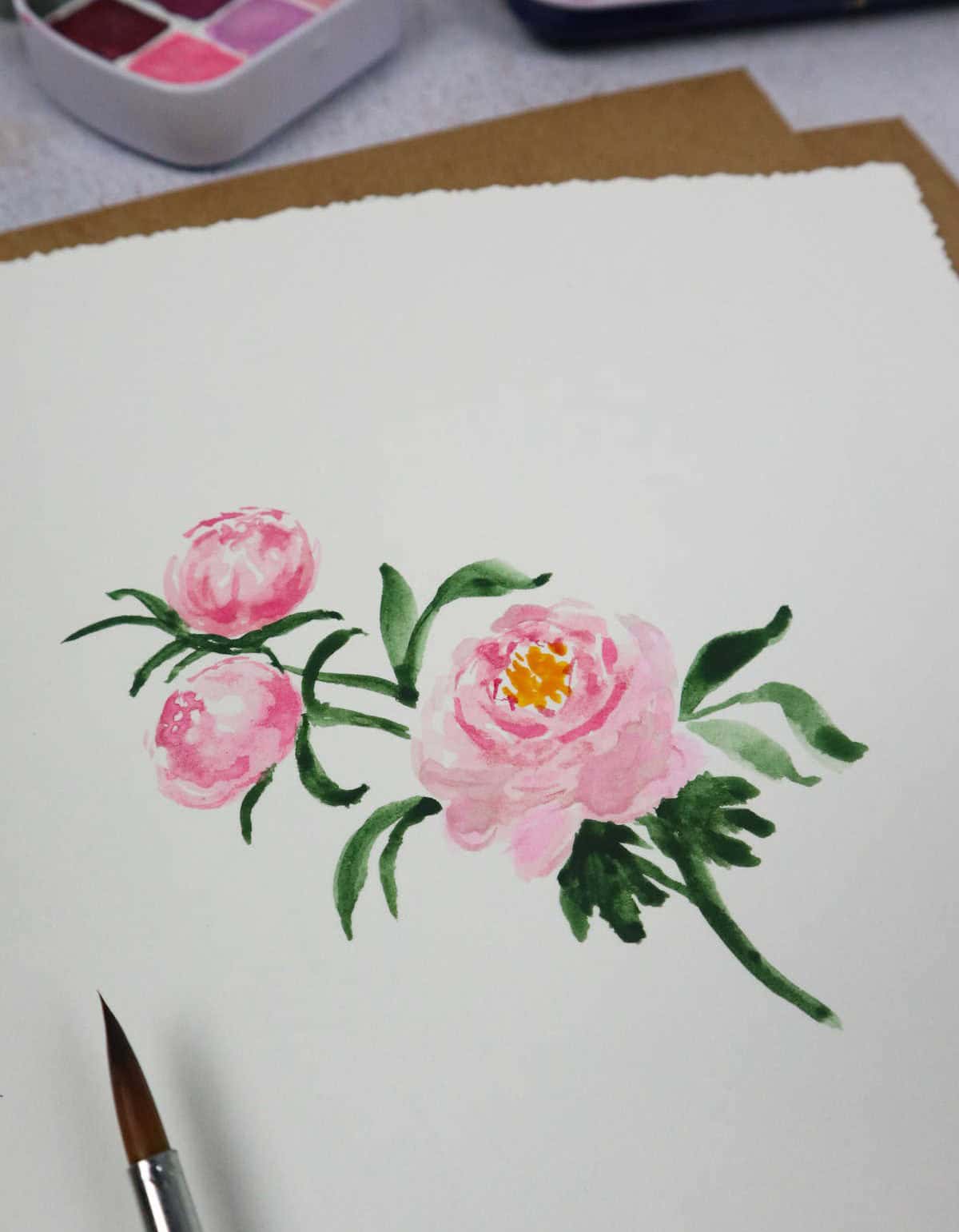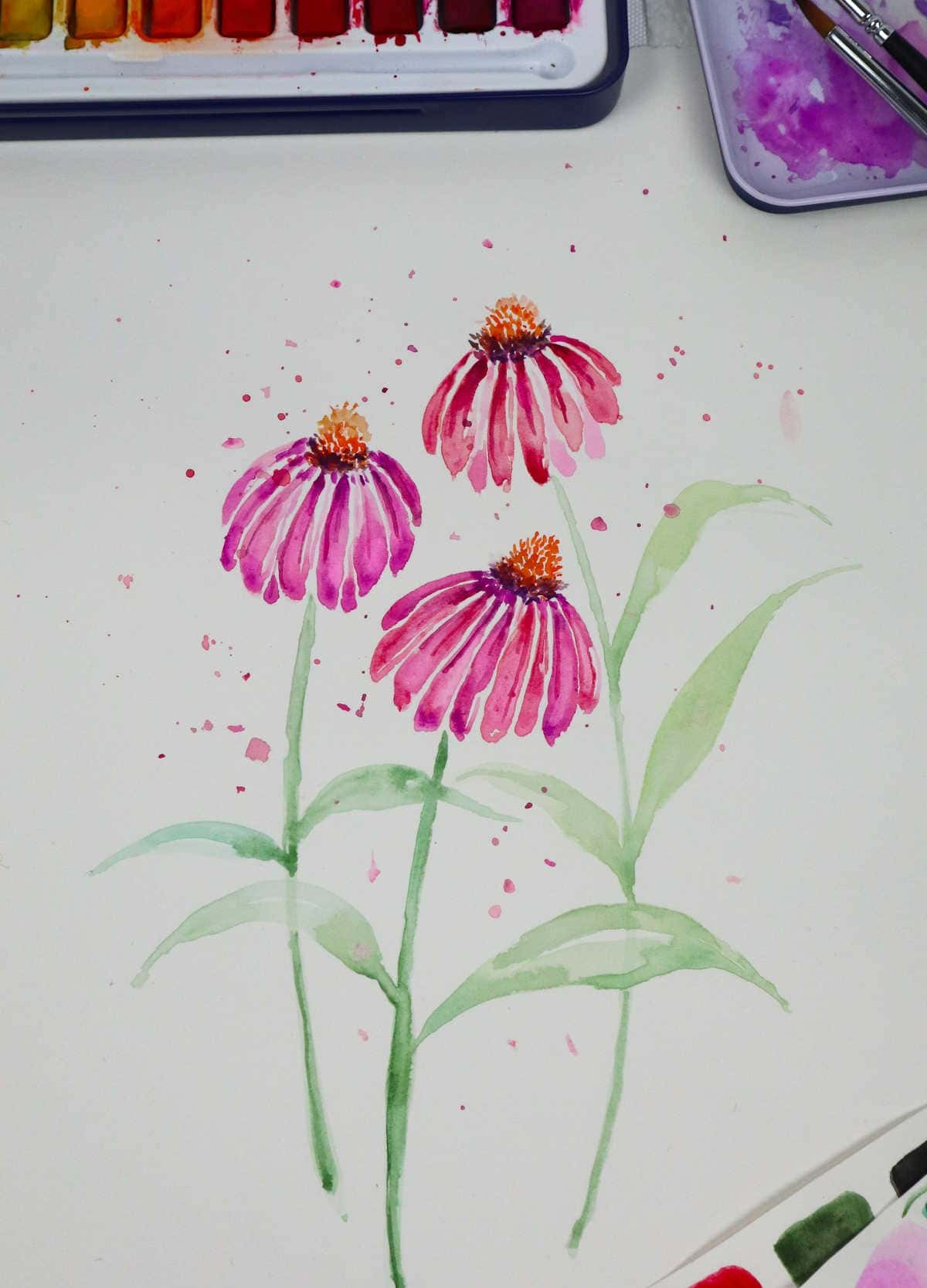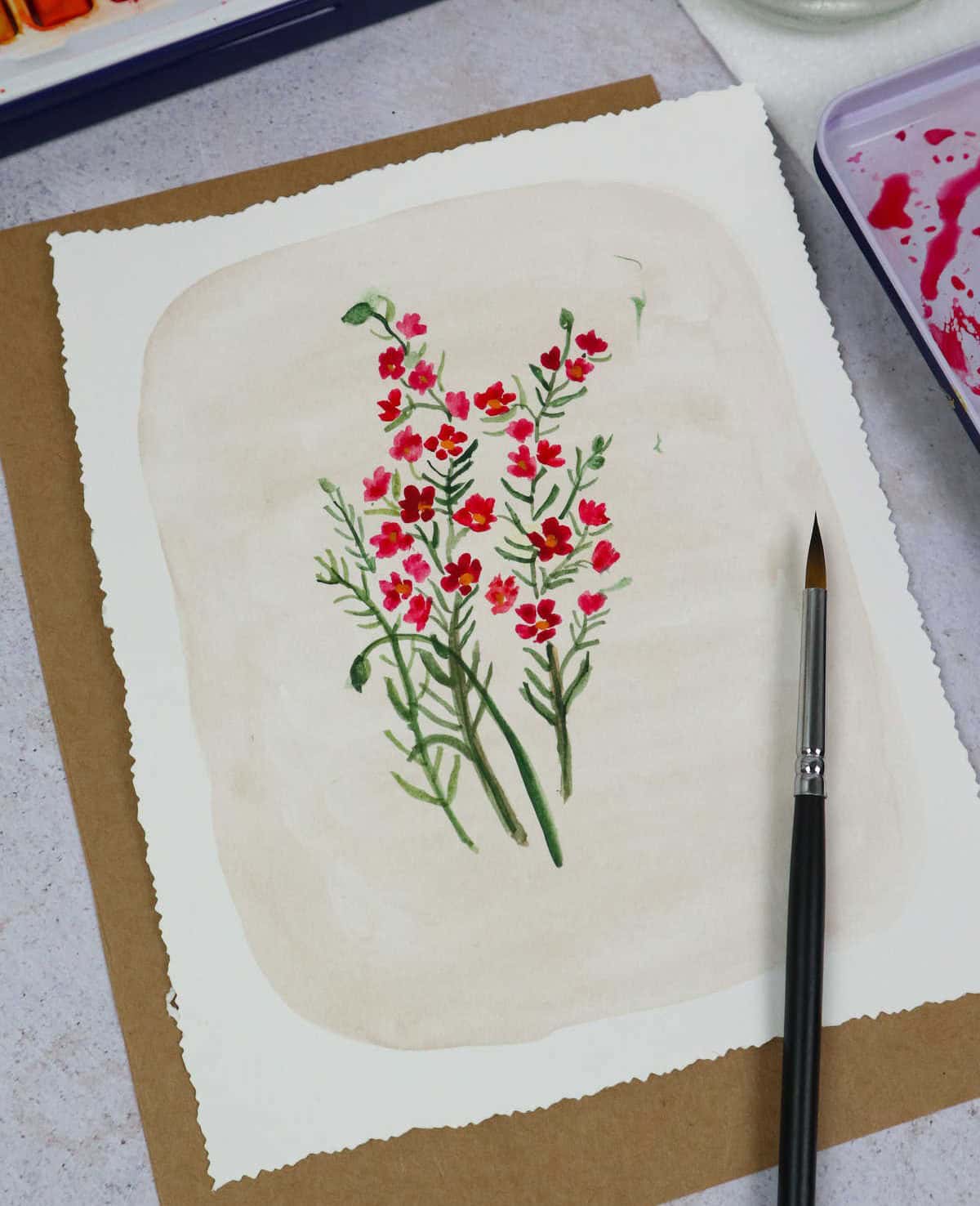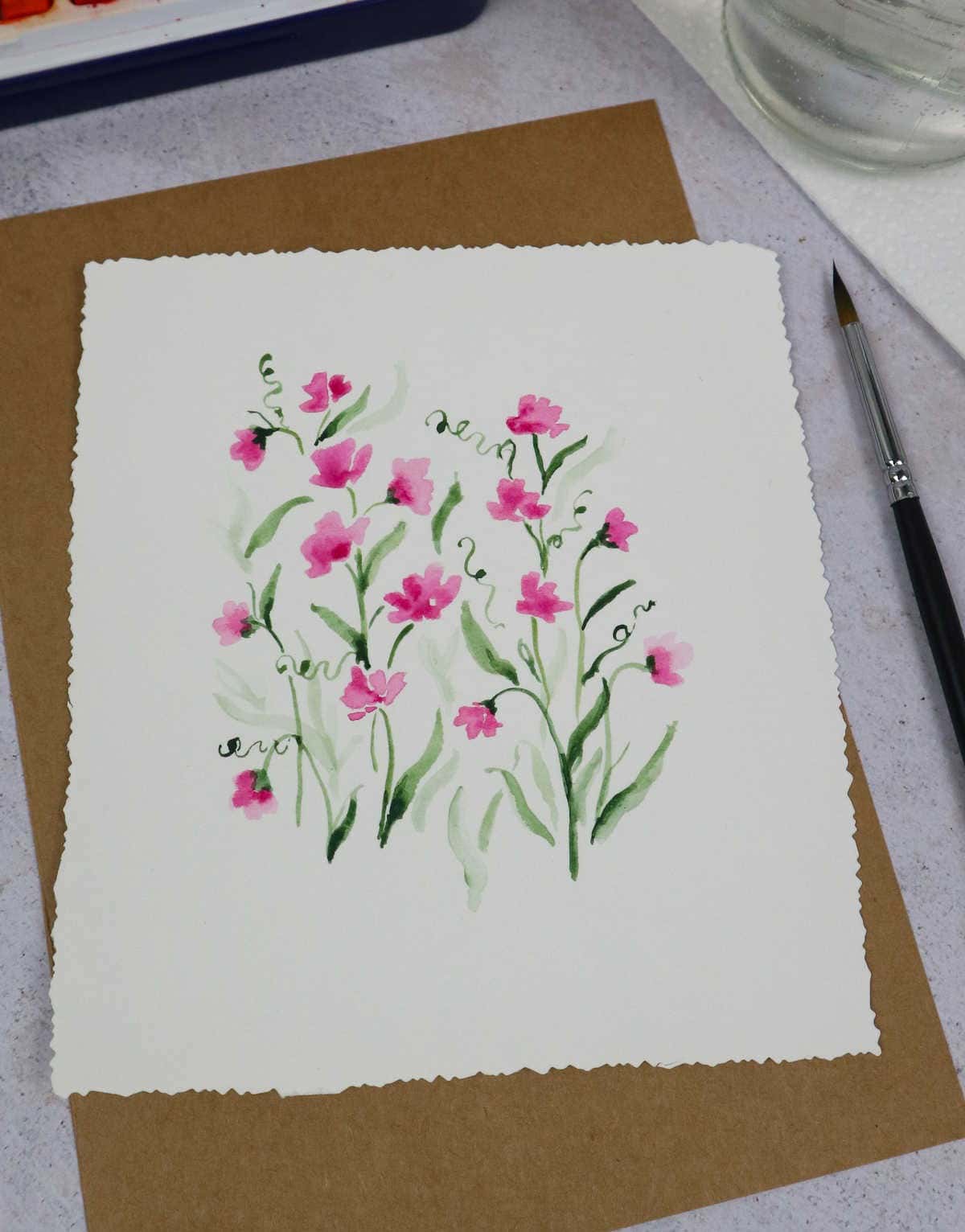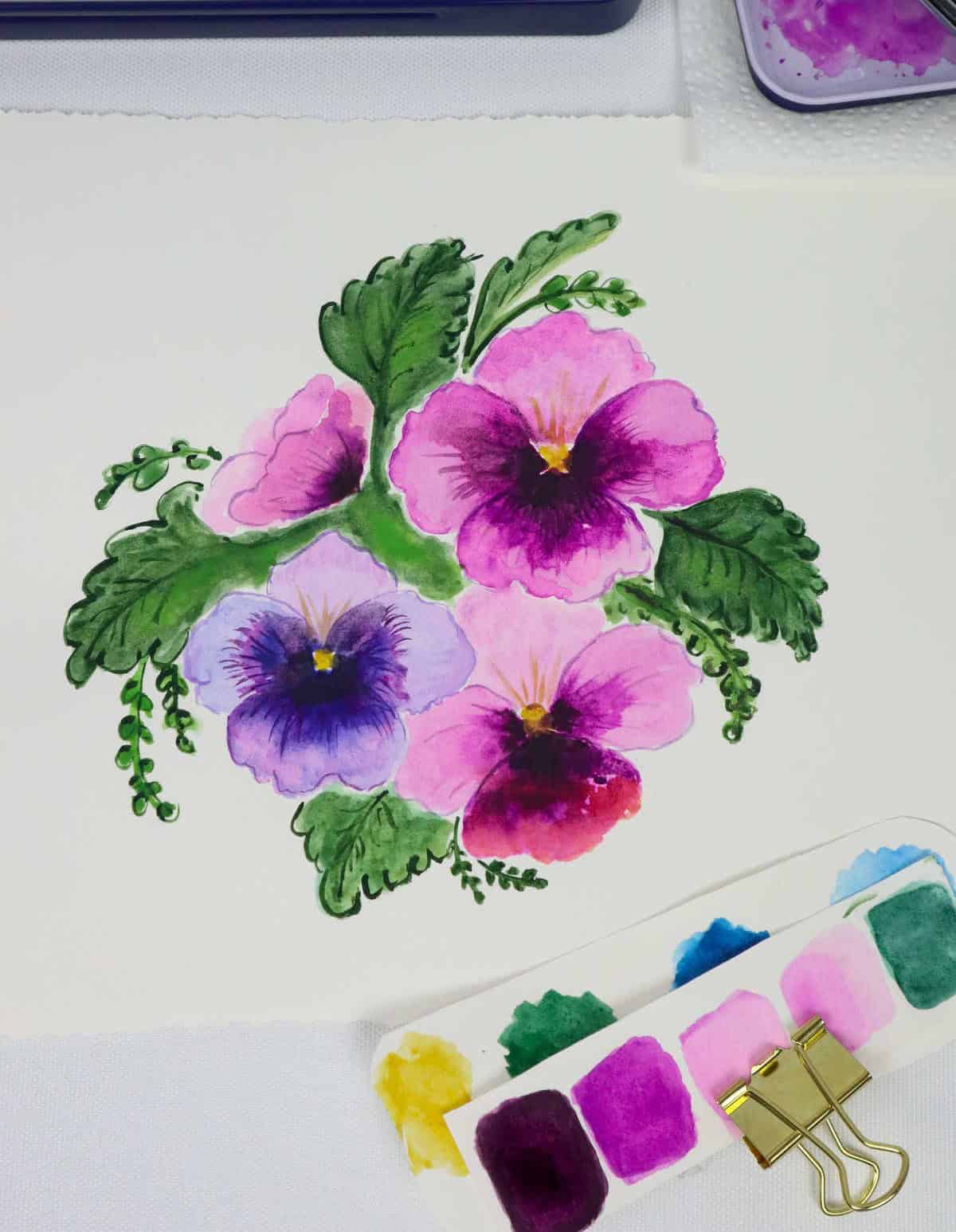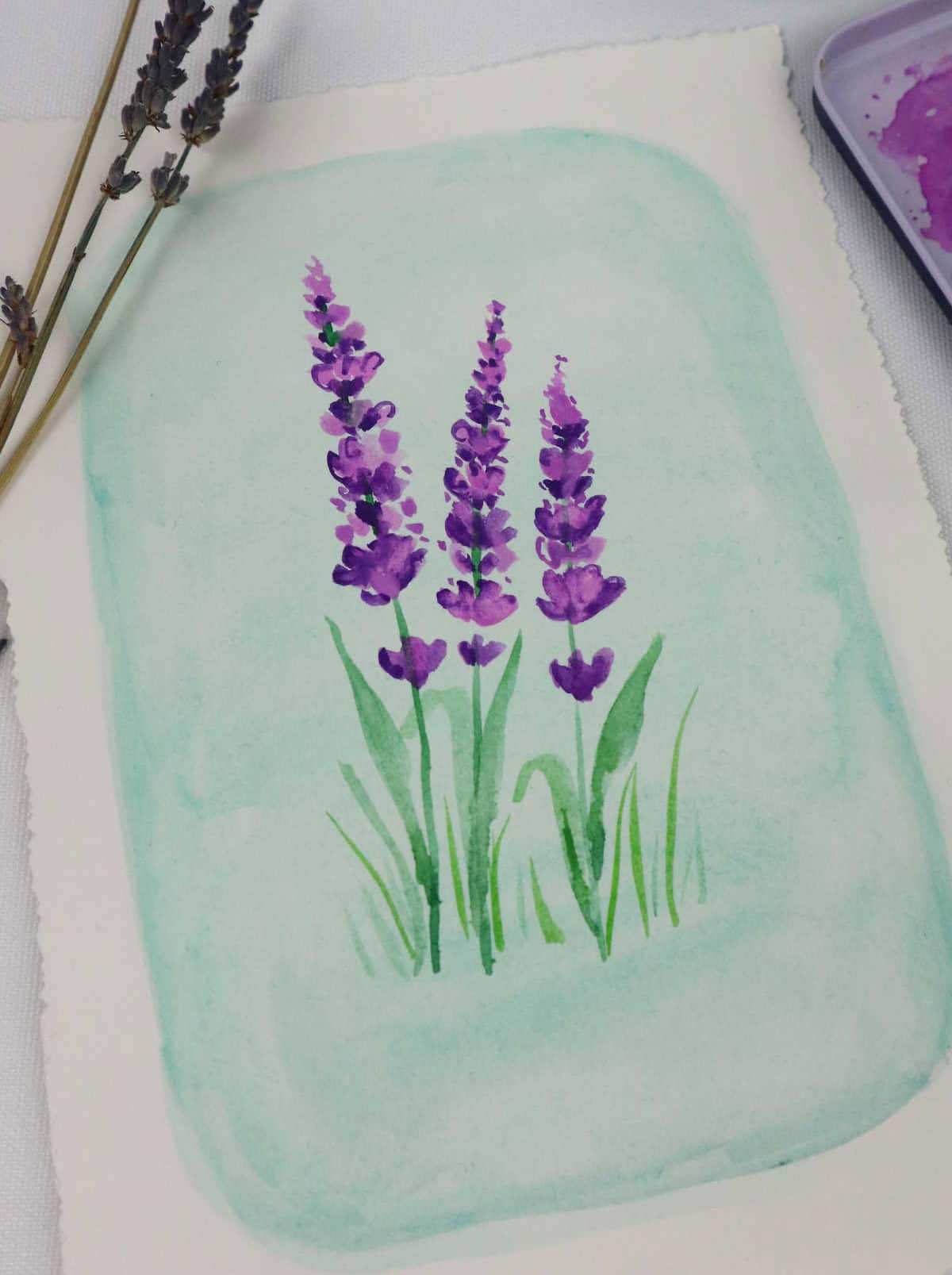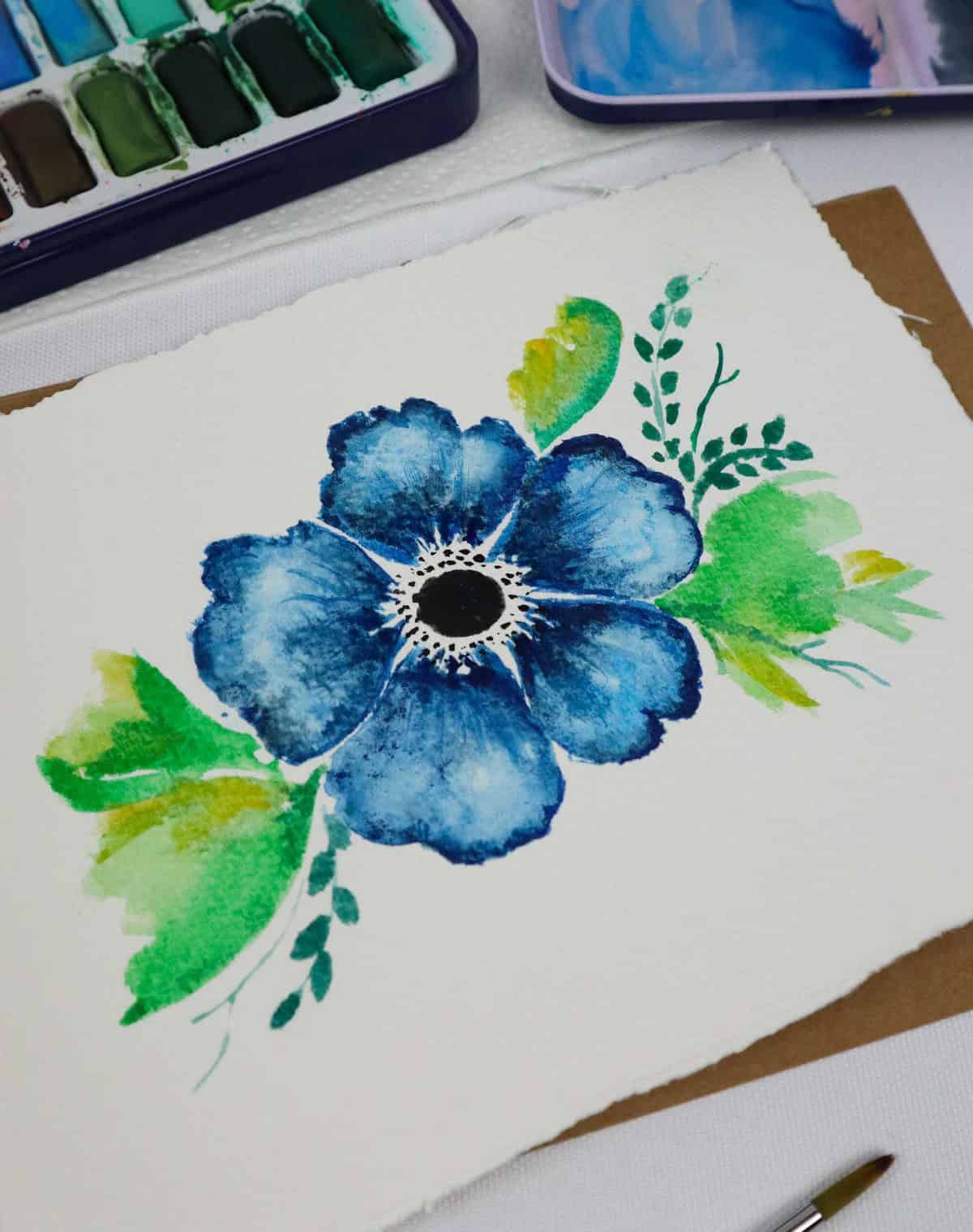Watercolor painting is an enchanting art form that celebrates creativity and self-expression. Among its many wonders, flowers are a timeless favorite, offering a diverse range of subjects to explore. As someone who’s been enamored with flora and fauna for a long time, I’ve had the pleasure of discovering how watercolors can bring these delicate beauties to life.
With their intricate details and vibrant hues, flowers present an ideal subject matter for artists of all levels, from beginners to seasoned practitioners. Below, you’ll find 21 gorgeous flower painting ideas that cater to varying skill levels. Whether you’re looking for a relaxing activity or seeking inspiration for cards, gifts, or personal enjoyment, these easy watercolor hacks and techniques will guide you every step of the way.
Feel free to pick your pace, starting with simpler subjects and gradually moving on to more complex ones. And if you’re curious about my personal preferences, I’ve included details on the paints, paper, and brushes I used in my own works. Take note that the paints are from a particular set that excels at building color depth, while the paper features a texture that won’t obstruct your creative flow.
As for brushes, these comparable options provide excellent value, and the pencils I use are perfect for light sketching.
Roses
Roses, with their delicate petals and striking hues, are a painter’s dream come true. Whether you’re a seasoned artist or just starting out, capturing the essence of this iconic bloom can be a truly delightful experience. I find that approaching rose painting from different angles yields unique and captivating results. From subtle nuances to bold statements, each perspective offers a fresh opportunity for creative expression.
For beginners, painting roses is an excellent way to develop fundamental skills while producing beautiful pieces that bring joy to all who see them.
Lupins
Lupins are renowned for their vibrant hues and striking floral structures, which can be effectively captured on canvas through watercolor painting. To add an extra layer of charm to your Lupin-inspired artwork, consider incorporating a subtle background element. This technique can help create a whimsical atmosphere, drawing the viewer’s eye to the tall, spiky blooms that are the focal point of the piece.
Poppies
Poppies boast a distinctive red hue and intricate petal details, making them an enchanting subject for watercolor enthusiasts. When paired with a calming blue or green background, the resulting piece is nothing short of breathtaking. For those seeking to add some uniqueness to their art, consider experimenting with more unconventional poppy shades such as ivory, golden yellow, vibrant orange, or even subtle blues and purples.
While red remains the quintessential color associated with poppies, these alternative hues are certainly worth exploring. If you’re drawn to this floral inspiration, you may also appreciate our collection of effortless tree drawing ideas.
Orchids
Exotic orchids, with their kaleidoscope of colors and intricate patterns, present a captivating subject for watercolor painting. The complexity of their shapes and details can be both daunting and thrilling to tackle. When gifted, these artworks not only showcase the recipient’s appreciation for nature but also serve as a symbol of thoughtfulness.
Framed or transformed into a card, they become unique, handmade tokens that bring joy to friends who may not possess a green thumb, yet still appreciate the beauty of plants.
Cherry Blossoms
As the seasons transition from winter to spring, cherry blossoms emerge as a vibrant symbol of renewal and rebirth. The intricate dance of delicate pink petals and slender branches creates an enchanting watercolor-inspired scene. This natural beauty is not only a stunning sight but also an ideal subject for artistic expression.
Whether you’re an enthusiast of watercolors or simply looking to capture the essence of spring, creating a cherry blossom-inspired art project can be a wonderful way to appreciate these fleeting flowers year-round.
Forget-Me-Not
Forget-me-nots, with their dainty blue petals, offer a charming subject for a watercolor painting that exudes simplicity and elegance. The beauty of this flower lies not only in its delicate appearance but also in the versatility it affords in terms of color exploration. One could play around with shades of blue, gradually transitioning into purples, pinks, and whites to create an ombre effect that adds depth and visual interest to the piece.
For more inspiring drawing ideas, visit our dedicated page.
Mimosas
The Mimosas’ namesake flower is a standout among its peers, and it’s not hard to see why. Its bright yellow blooms and delicate foliage are a perfect inspiration for watercolor painters seeking a sweet and whimsical subject. The feathery leaves and fluffy flowers of the Mimosa plant are sure to bring a touch of playfulness to any artwork.
Bluebells
Bluebells, with their enchanting blue blooms and slender stems, have captivated the hearts of many. As a subject for painting, they evoke a sense of serenity and calmness. A solitary Bluebell can create a hauntingly beautiful scene, but it’s when they’re grouped together that their true complexity shines through. A field full of them can be a mesmerizing and thought-provoking canvas just waiting to be brought to life.
Before putting pencil to paper, take the time to sketch out your idea and let the whimsy of these charming flowers unfold.
Gerberas
Gerberas’ vibrant blooms are renowned for their striking beauty, making them an artist’s delight. When it comes to capturing these flowers on canvas, a straightforward approach is often the most effective. Painting Gerberas from a frontal angle can produce stunning results, reminiscent of classic rosewatercolor paintings. However, don’t be limited by convention – experimenting with unique perspectives can lead to fresh and exciting interpretations.
Peony
Peonies, with their majestic blooms and vibrant hues, offer a captivating canvas for watercolor artists. Their delicate petals unfurl like a showstopper on the page, waiting to be brought to life through artistic expression. The palette is vast, spanning warm tones like pink, red, orange, and yellow, as well as crisp whites that provide a stunning contrast. Whether you opt for a monochromatic masterpiece or a harmonious blend of colors, peonies are sure to inspire your brushstrokes.
Echinacea
In the realm of botanical art, Echinacea – commonly referred to as coneflowers – are a sought-after subject matter. Their distinctive shape and kaleidoscope of colors make them an absolute delight to capture on canvas using watercolor techniques. The possibilities for creative expression are endless when working with these flowers. Feel free to get inspired by the pink hue I’ve used, or explore other vibrant options like red, orange, white, or yellow.
Ultimately, each of these varieties offers a unique opportunity to experiment with color and technique, making them an excellent choice for artists of all skill levels looking to hone their craft.
Cosmos
Cosmos, often depicted as delicate flowers with intricate petals, offer a kaleidoscope of colors to captivate the eye. As a subject for watercolor painting, they bring a touch of whimsy and charm to any piece. Their varying heights and diverse color palette, including shades of pink, orange, red, yellow, white, and maroon, provide endless opportunities for artistic exploration.
Tulips
With their diverse palette of colors and unique shapes, tulips have become an iconic subject for watercolor artists. While they can be a bit challenging to capture in terms of structure due to their bulbous tops and elongated stems, attempting a simple sketch beforehand can help refine the overall design and lay the foundation for a beautiful watercolor painting.
Wax Flowers
Wax flowers boast a distinctive waxy texture and long-lasting blooms, making them an intriguing subject for watercolor artists. When paired with complementary shrubbery, the scenery is elevated to new heights. Typically diminutive in size, wax flowers nevertheless pack a punch with their vibrant hues, ranging from crisp whites to soft pinks and rich purples.
Primrose
Primroses, with their dainty petals and vibrant hues, offer a serene subject for watercolor artists. Their delicate charm is further enhanced by pairing them with lush greenery, creating a harmonious composition that exudes tranquility. Additionally, primroses present an excellent opportunity to experiment with blending colors, making them an ideal choice for those looking to hone their skills in this area.
Sweet Peas
The allure of sweet peas lies not only in their intoxicating fragrance but also in their vibrant hues, making them an ideal subject for romantic watercolor paintings that seem almost tangible. The flowers’ versatility is further highlighted by the array of colors they come in, including crimson reds, navy blues, pastel lavenders, pinks, and pure whites. A painting featuring multiple colors would be a stunning representation of their beauty, showcasing the full range of hues available.
Pansy
In gardens, pansies are a beloved flower that thrives with minimal upkeep, making them an ideal subject for artistic expression. Their vibrant colors and varied patterns invite creative liberties in watercolor paintings, allowing artists to explore depth and dimension. With hues ranging from sunny yellow and fiery red to rich mahogany and deep purple, mauve, pink, orange, white, and even dramatic black, the possibilities are endless.
Whether you prefer bold contrasts or harmonious solids, pansies offer a kaleidoscope of colors to inspire your artistic vision.
Cornflowers
Cornflowers, with their delicate petals, are often overlooked despite their striking beauty. Typically characterized by a vibrant blue hue, these wildflowers can also be found in a range of other colors including white, pink, red-purple, deep burgundy, and even a rich blue that’s almost black. The subtle yet captivating quality of cornflowers makes them an attractive subject for watercolor painting.
Whether observed in their natural state or recreated on paper, the charm of these flowers is undeniable.
Lavender
While opinions about lavender tend to be divided, one thing is undeniable: the flower presents an excellent canvas for artistic expression. The calming aroma and stunning purple blooms of nature’s lavender can be just as effectively captured in watercolor paintings, even without their signature fragrance. Whether you opt for a field full of these lovely flowers or focus on a single bloom, the possibilities are endless.
Lavender’s serene and peaceful qualities make it an ideal subject for watercolor artists seeking to create soothing masterpieces.
Blue Anemone
Blue anemones boast a striking beauty, with delicate bluish petals that can be the perfect centerpiece for any art project. But what’s more remarkable is the range of hues they display – from deep lavender to pale mauve, almost reaching the boundaries of white. This versatility makes them an excellent choice for exploring color blending and artistic experimentation.
Oleander
The oleander shrub is renowned for its radiant blooms, which can be found in a range of vibrant colors including pink, red, and white. Its resilience to scorching heat and arid conditions makes it an ideal choice for landscaping in warm climates. The intricate clusters of delicate, funnel-shaped flowers and dark green leaves offer a painterly delight, perfect for capturing on canvas or translating into a stunning watercolor painting.
